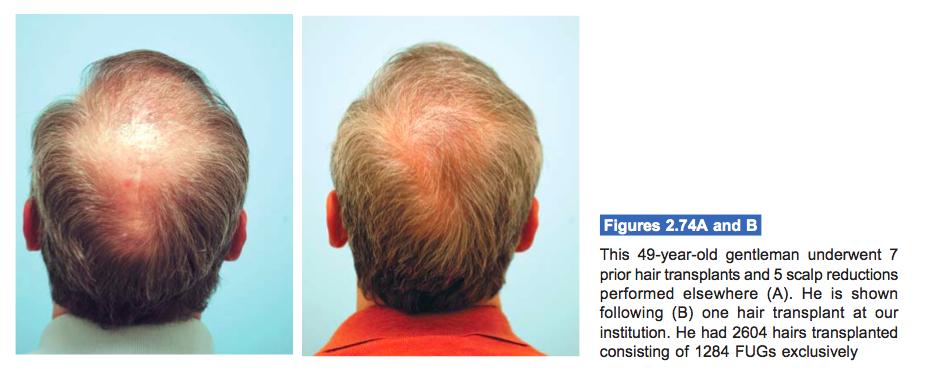Regions of the Head for Hair Transplant Part 4 of 4: The Crown
The final area of the scalp that I am going to address is the crown. It is also known as the vertex. Some surgeons differentiate between the two terms, but I personally think that the two should be synonymous. The crown rests on the posterior vertical scalp transitioning to the posterior midscalp (on the horizontal plane) at the vertex transition zone, or vertex transition point. On the sides, the crown ends where the lateral humps begin, i.e., from the posterior vertical plane to the side vertical plane of the head. Inferiorly, the crown ends where the donor area begins. Those are the borders of the crown region. (View crown hair transplant procedures).
The reason to transplant a crown goes beyond the obvious one of just putting hair in an area that is bald, as seen from the back. The upper arc of the crown extends upward to help cover the hair part and also contribute to visual hair density in the posterior midscalp. In other words, someone seeing you from the front view will also see a greater degree of hair density by virtue of the upper portion of the transplanted crown. In addition, a transplanted crown can improve one’s profile view, since a bald crown will look like a flattened portion of the head from the side view, i.e., the roundness caused by the presence of crown hair will be gone. In short, a transplanted crown can improve the perception of hair density from all viewing angles: front, side and back.

Figure reprinted with permission from Hair Transplant 360, Volume 1 (Jaypee Brothers Medical Publishers, 2011), Samuel M. Lam MD
The hair in the crown follows a unique pattern in that it is a spiral or whorl configuration, most of the time clockwise, sometimes counterclockwise, and rarely a double whorl is present. In some women, the pattern can just be a diffuse one without a whorling appearance. It is imperative to recreate this whorl in such a way that the area looks natural to direct view.
Because hairs are viewed directly on end since the hairs rest on the vertical plane and are spiraled outward, the density in the crown may be less than achievable for the front region of the scalp. Fortunately, I believe I get remarkable crown results in my patients but at times require a second procedure to complete the task. Also, when the hairs are wet, there is an additional halo of thin hairs that must be transplanted that lie beyond the circumference of dry hair. For all these reasons, a standard crown requires a lot of grafts to get the job done right.
In a separate article, I will be discussing the very detailed aspects of how I approach a crown and how I strategize to make the crown as dense as possible, as I have written about in my new textbook, Hair Transplant 360. I will outline a few cursory ideas in this article. First, it is very important to do the opposite as far as hair angles are concerned in the crown compared with the frontal hairline: in the hairline the angles of the hair grafts should remain very low so that they create an awning over the front scalp and make the area look denser and more natural. In the crown, the angles must instead be maintained very high vis-à-vis the scalp because the hairs need to create a visual roundness (and thereby fullness) in this area. Also because the grafts are splayed in a spiral, I can more tightly pack the grafts together when my grafts are more vertically oriented since less space is occupied below the skin surface when they are not positioned flatter. I hope that makes sense: it is a difficult ncept to explain.
Just like in the rest of the head, allocating grafts to areas of primary importance is a key element to artistry and to creating the best visual impact possible. The upper arc of the crown takes visual priority since these hairs arc over and cover for the most part the lower half of the arc. Like the cascade effect discussed in the midscalp article (second of the four articles in this series), the upper arc takes precedence but so does the central part of the whorl that tends to cover a greater travel distance than do hairs transplanted in the periphery of the crown.
I hope this article series gives you a small glimpse into my world of hair restoration, as I strategize how best to take the harvested hairs for hair transplantation and allocate them for optimal visual aesthetic impact.
To learn more about my hair transplant technique, or to learn more about Samuel M. Lam, MD, FACS, a board certified hair restoration surgeon specializing in hair restoration for men and women, please visit our website hairtx.com or call 972-312-8105 to schedule a consultation.




